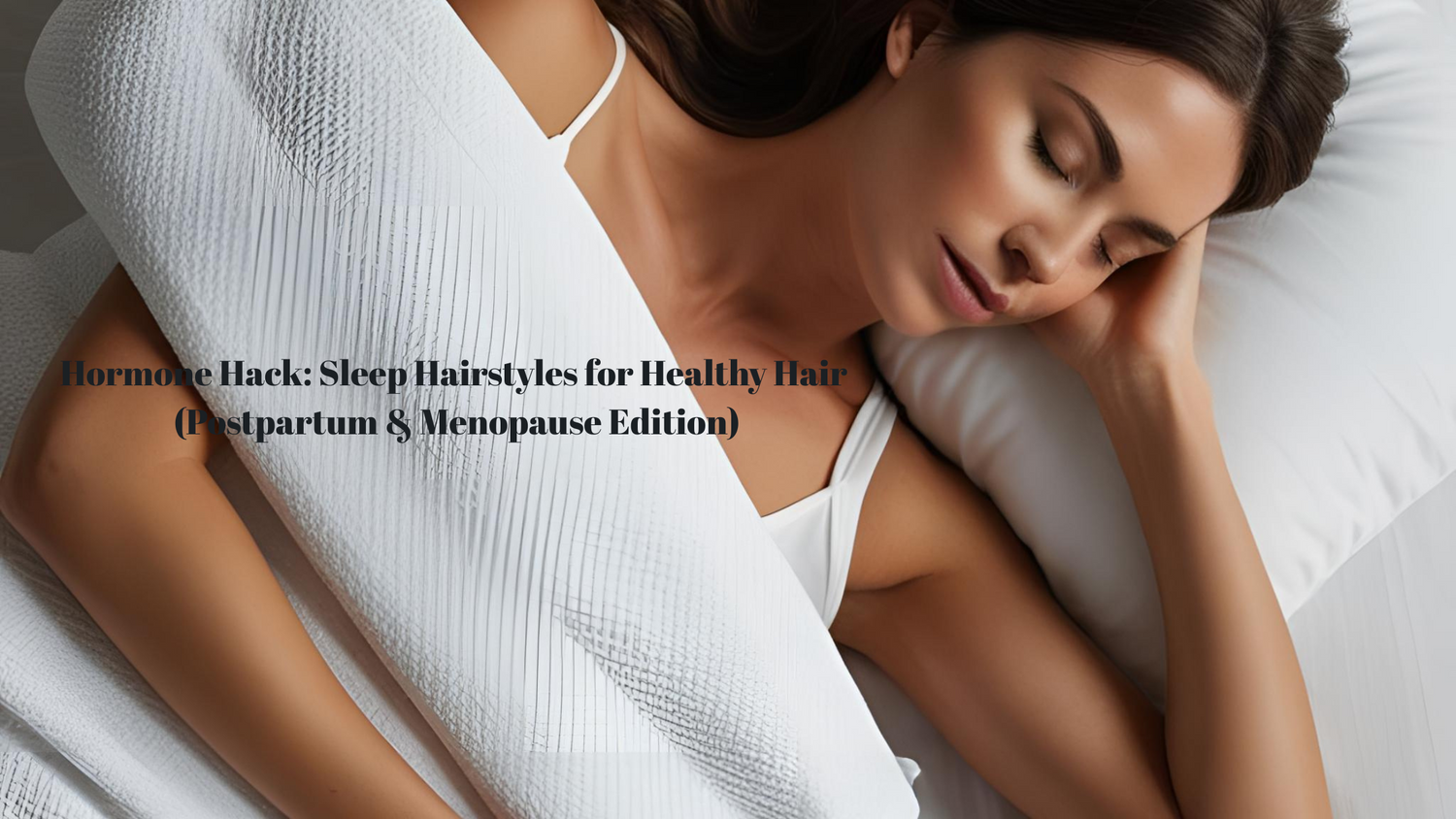Why Your Hormones Are Messing With Your Hair (and What to Do About It)
If you’ve noticed your hair looking thinner, drier, or falling out more than usual after giving birth or during menopause — you’re not imagining it. Hormonal fluctuations wreak havoc on hair health during both postpartum recovery and midlife changes.
In the postpartum period, oestrogen levels drop sharply after birth, triggering hair shedding (known as telogen effluvium). During menopause, declining oestrogen and progesterone make hair follicles shrink, leading to thinning hair, especially around the crown and temples.
Good news: while you can’t always control your hormones, you can support your strands with smart, protective habits — starting with how you wear your hair at night
The Hormone-Friendly Hack: Sleep Hairstyles for Healthy Hair
Believe it or not, the way you style your hair before bed can dramatically impact hair strength, breakage, and growth — especially when your locks are vulnerable from hormonal shifts. Here’s how to make overnight hair care part of your hair loss recovery routine:
5 Sleep Hairstyles That Help Prevent Hair Loss & Boost Growth
The Loose Low Braid
🔑 Why it works: Keeps hair tangle-free while reducing tension and friction against your pillow. Prevents overnight breakage for fragile postpartum and menopausal hair.
How to:
Use a soft scrunchie or silk hair tie to loosely braid hair at the nape of your neck. Avoid pulling too tight to protect delicate roots.
The Pineapple (for Curly & Wavy Hair)
🔑 Why it works: Lifts hair off the scalp to prevent flatness and protects natural curls from frizz and tangling.
How to:
Gather hair loosely at the crown with a silk scrunchie, letting ends spill over like a pineapple top.
The Silk Wrap or Bonnet
🔑 Why it works: Creates a friction-free barrier to retain moisture and prevent split ends, ideal for menopausal dryness and postpartum fragility.
How to:
Wrap hair gently in a silk scarf or sleep in a silk bonnet. Pair with a hydrating overnight hair oil for deep nourishment.
The Twisted Low Bun
🔑 Why it works: Keeps hair tidy and tangle-free without stressing weakened strands.
How to:
Twist hair into a loose bun at the nape and secure with a silk scrunchie. Avoid tight elastics that can cause breakage.
Loose Pigtails
🔑 Why it works: Distributes hair weight evenly and prevents tension on thinning hairlines.
How to:
Divide hair into two loose, low pigtails. Use soft ties and avoid tugging at the scalp.
🌿 Pro Tip: Always Sleep on Silk
Pair your sleep hairstyle with a silk or satin pillowcase. Unlike cotton, these fabrics reduce friction, retain moisture, and help prevent breakage — essential for hormone-sensitive hair prone to dryness and snapping.
🌱 Bonus: Overnight Hair Care Tips for Hormonal Hair Health
✔️ Apply a lightweight hair oil before bed to nourish dry, brittle strands (our Menopause Support Hair Oil is perfect for this).
✔️ Avoid tight hairstyles — tension accelerates hair loss at vulnerable roots.
✔️ Brush hair gently before bed to distribute natural oils and detangle safely.
✔️ Keep hair dry before sleep — wet hair is more prone to breakage.
✨ Why Sleep Hairstyles Matter More for Hormonal Hair Loss
Both postpartum hair shedding and menopause hair thinning mean hair is in a fragile state. Overnight friction, dryness, and breakage only make things worse. These simple protective sleep hairstyles reduce stress on your hair, improve scalp circulation, and create the ideal environment for hair growth and repair while you sleep
💛 Final Thoughts: A Small Habit, Big Results
Your nightly hair routine might feel like a small thing — but for hormonal hair health, it’s one of the easiest, most effective changes you can make. Pair these sleep hairstyles for healthy hair with a nourishing hair oil, a silk pillowcase, and a little extra TLC, and you’ll notice stronger, shinier, healthier strands over time.





